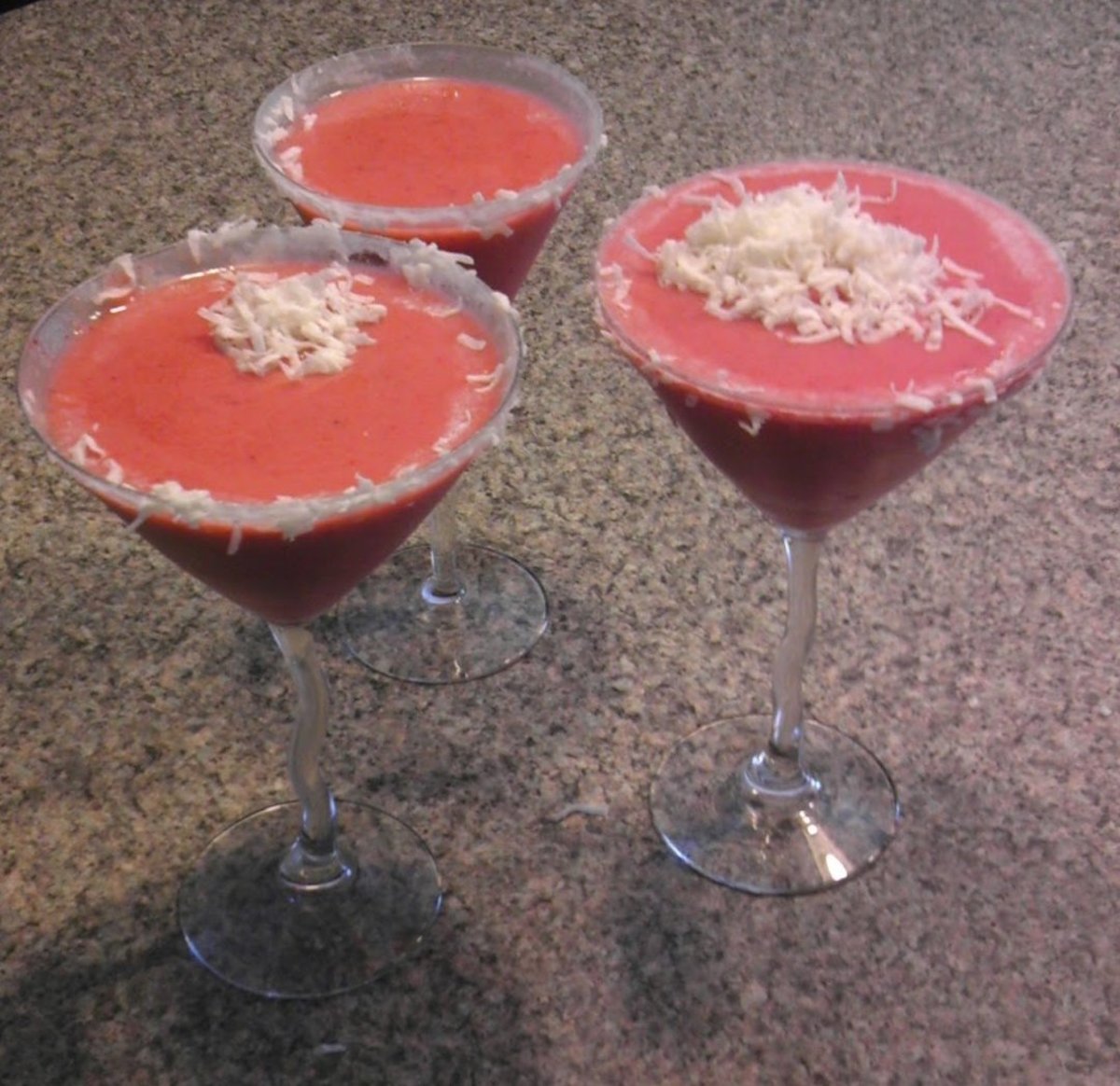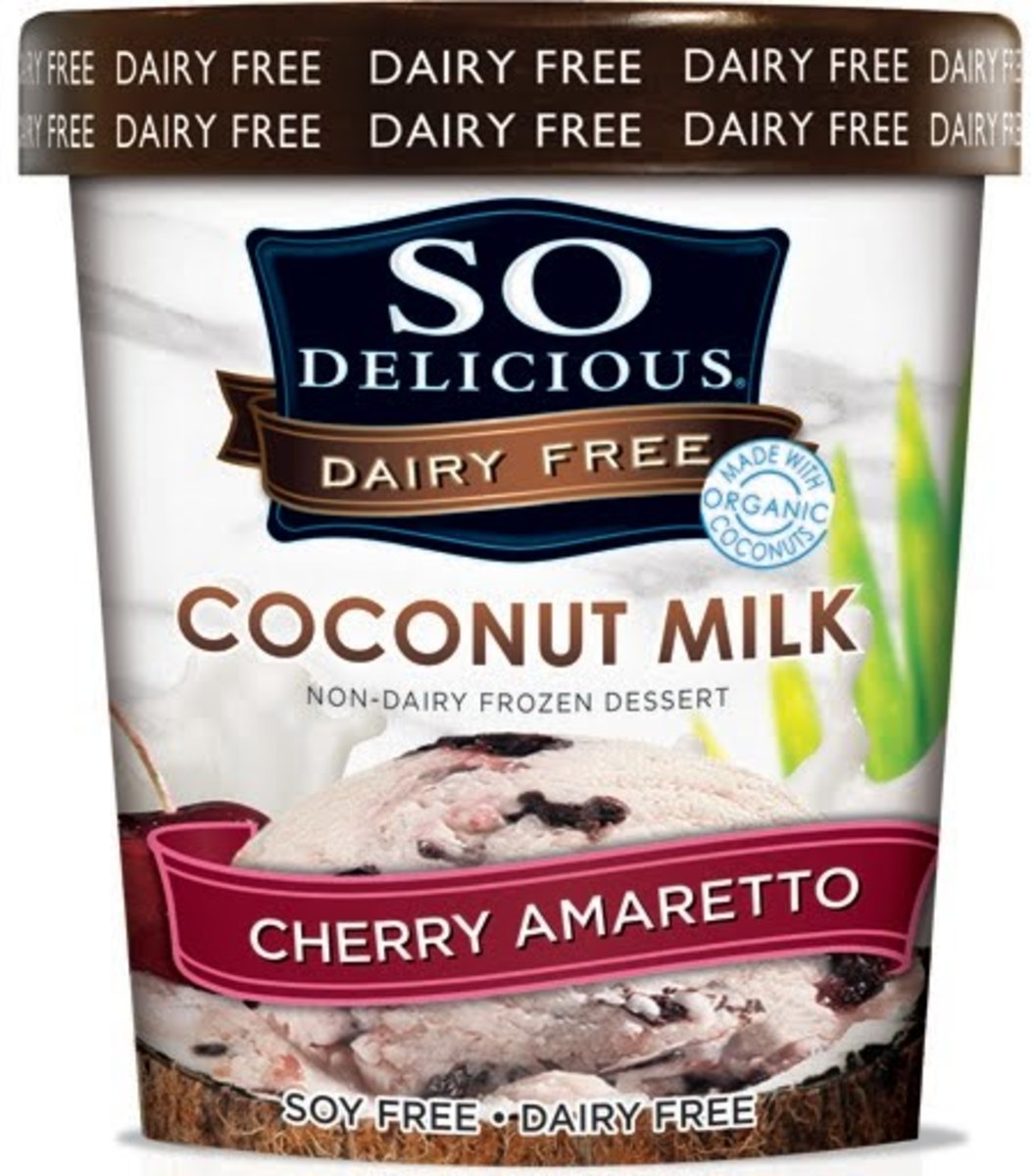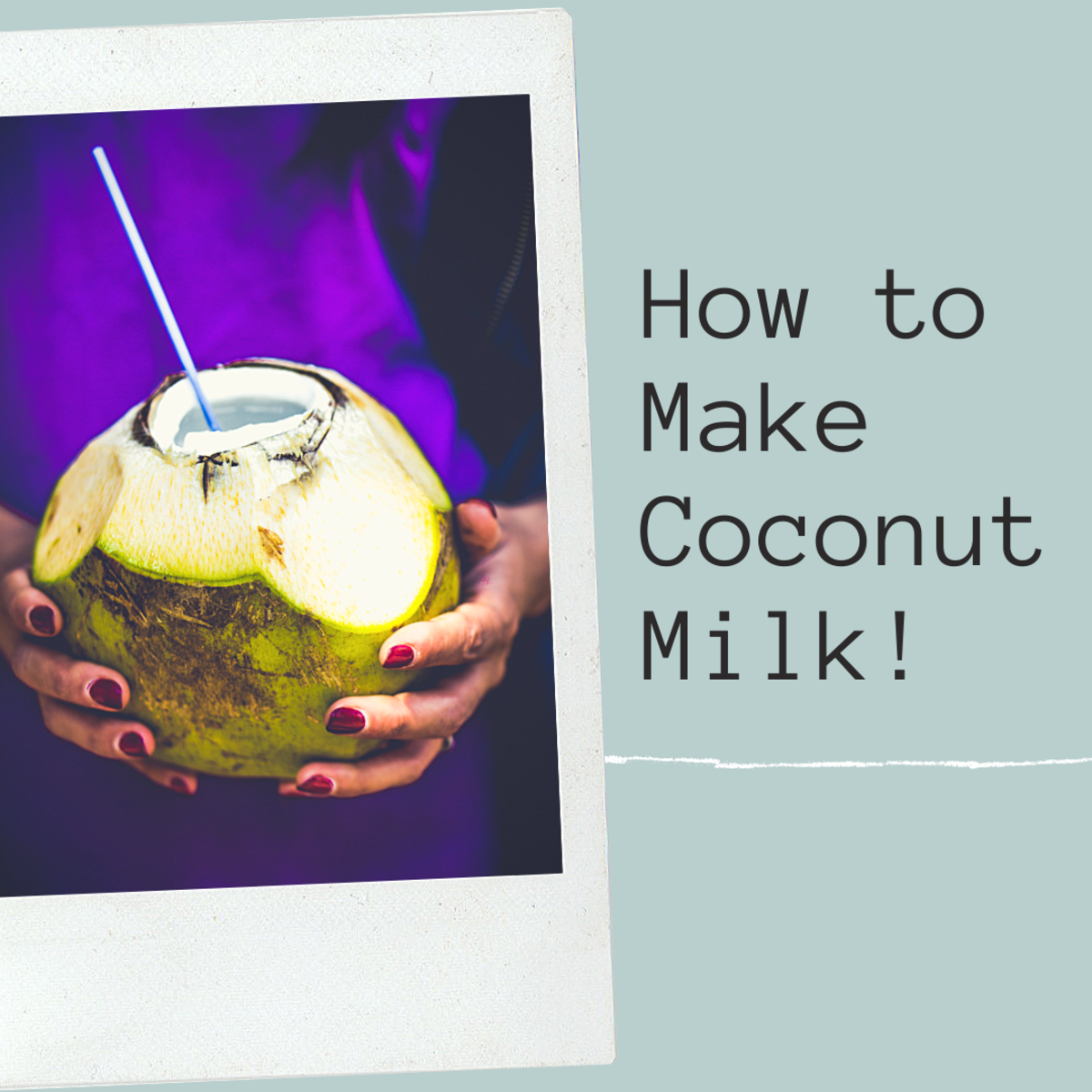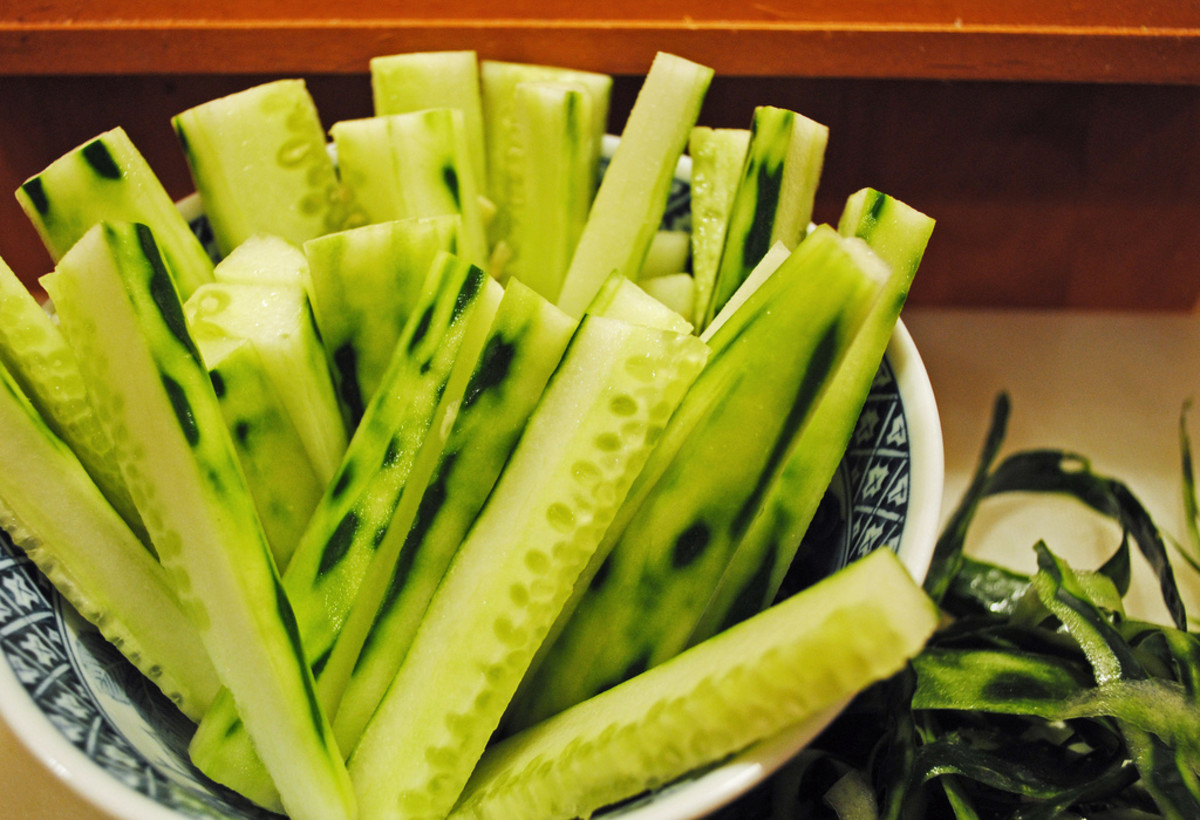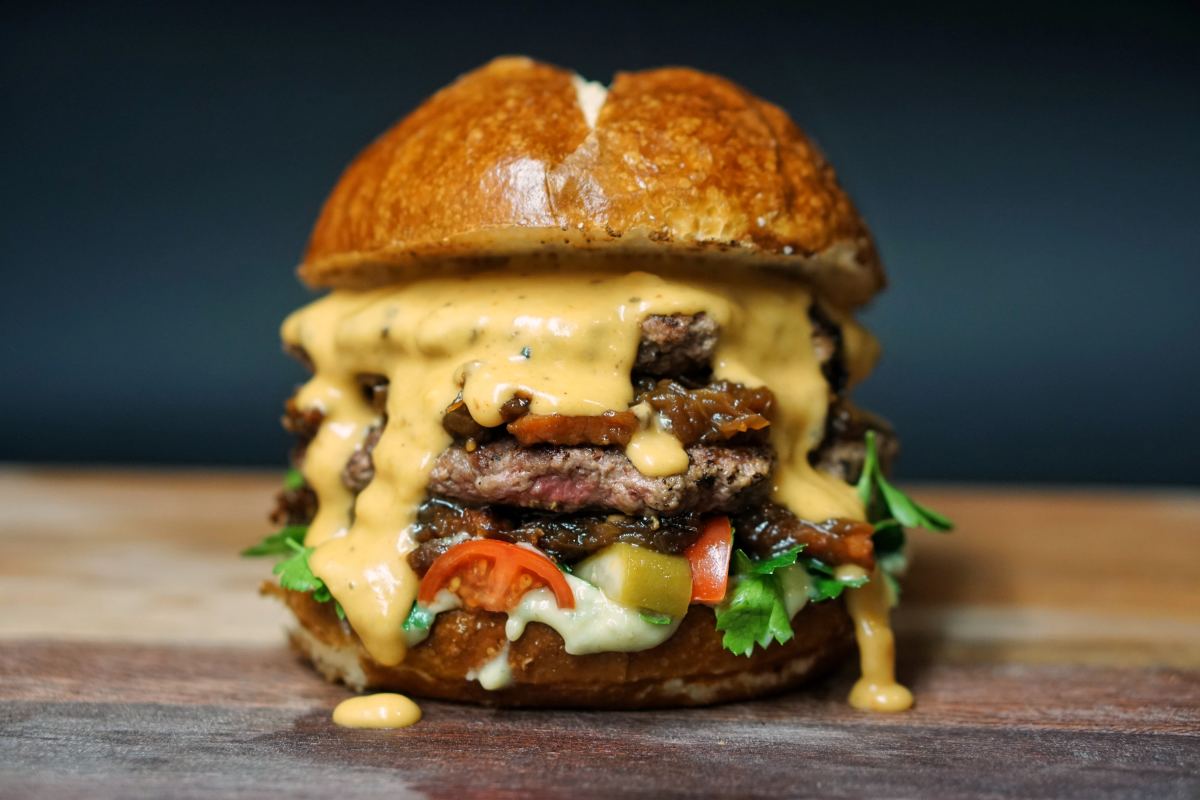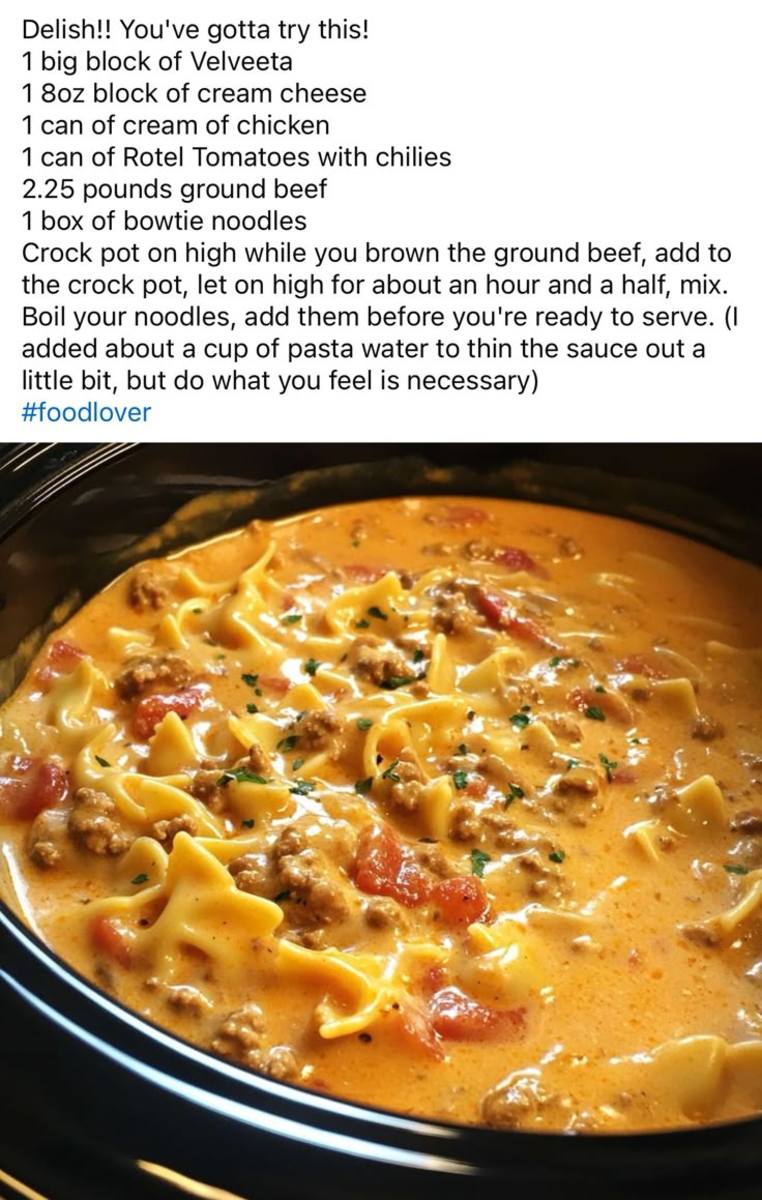Tropical Cooking with Travel Man: 1st Main Dish - Dried Gabi Leaves (Laing) in Coconut Milk
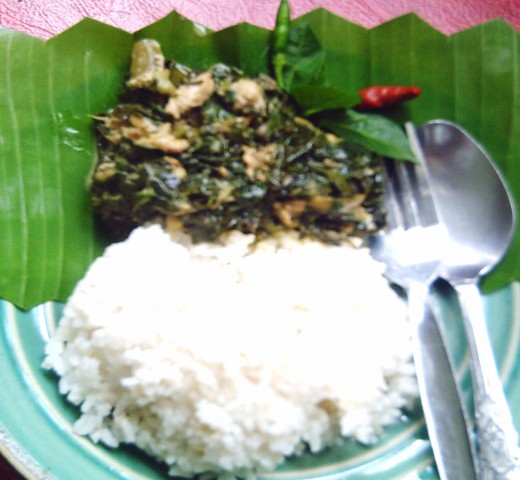
I'm starting a series of cooking hub with this regional entrée in my province, Camarines Sur. As part of the Bicol region, Bicolanos are known to cook their dishes with coconut milk. Since I was young, I become acquainted with the dishes that my mother, father, siblings and relatives cook.
To start off with, I present to you one of our typical entrée, dried gabi leaves with coconut milk. My father used to add ripe hot pepper (siling labuyo) and shrimp paste (pounded shrimp usually made from Camarines Norte) or dinilan in our dialect.
At first, I was against those hot dishes. It's somewhat akin with the dishes in Indonesia, Thailand and Malaysia. No doubt about it, because our forefathers came from mainland Asia. Our dialect is similar with the Bahasa language of Indonesia. Aside from it, they've taken their dishes to this new land as early as 13th century.
This main dish can relate with the characteristics of the Bicolanos. Since several varieties of taro plant or gabi abound in the region, they concocted amazing dishes with it's leaves (usually dried). What I like most is the LAING or dried leaves with coconut milk. For all year-round, I will never get enough of this dish. The ingredients are freshly available.
Buying it from the local market can be expensive. If your industrious and have vacant lot wehre you can plant gabi or taro, then, there's no need of buying it from the store. Likewise the coconut. Most households own one or two trees of coconut in the backyard or in front of the house (like me). My competition with the ripe hot pepper is the friendly birds or chicken; they also eat it whole. You can just feel hot when you eat the seed;that's a tip to evade the hotness of that little red thing. I've been a victim of that damn hot pepper when I was just a three year old toddler. I was told to believed that red means sweet.
Well, to cut it short, let's go to my backyard first to gather the ingredients.
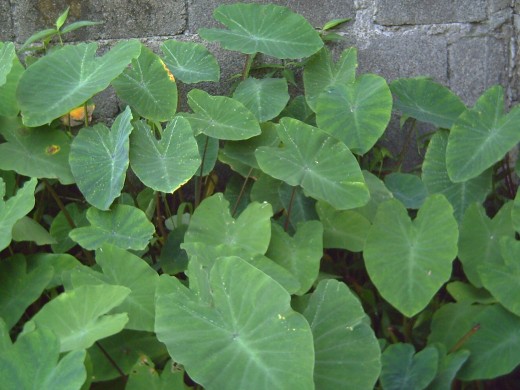
INGREDIENTS:
250 grams gabi leaves, dried and stripped
1 whole fresh mature coconut, grated then juiced
1/4 cloves garlic, pounded
1 small red onion, minced
1 stalk lemon grass
1 pinch black pepper, grounded finely
salt, to taste
additional: for better taste and garnishing
add sardines or
shrimp paste
or smoked fish, bones removed
PROCEDURE:
1. Concoct the grated coconut without water. Use a clean cheesecloth to extract the milk. Set aside.
2. Add water to the second and third concoction, about a liter per 250 grams dried leaves of coconut. Strain it on the medium pan.
3. Add the spices (garlic, onion, lemon grass). Let the concoction boil. Mix it throroughly to avoid curdling.
4. Add the dried gabi leaves. Let it boil for 15 minutes. Then turn the mixture for even cooking. Let the coconut milk evaporate.
5. Add sardines or other alternative taste enhance , like shrimp paste and smoked fish.Add little salt and ground pepper.
6. After 30 minutes, the LAING will be done. Add the pure coconut milk before serving.
Variation:
1. Small crabs are also added.
2. Fried fish is a good taste enhancer.
3. Small fishes, like dilis can also be added
For toppings:
A young coconut flesh or buko can add twist on your dish.
SERVE it with hot, boiled rice.
Let's Cook the Laing
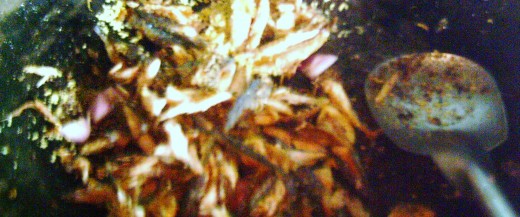
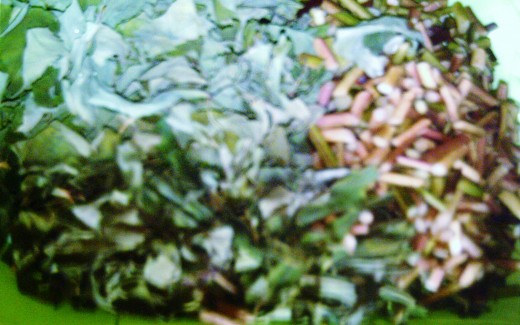
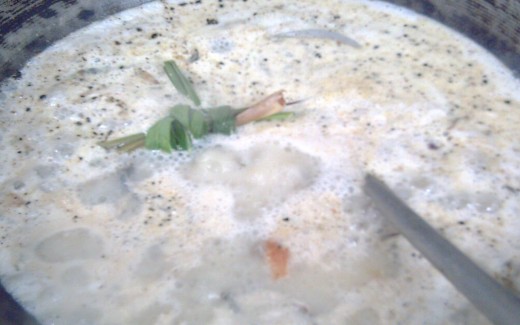
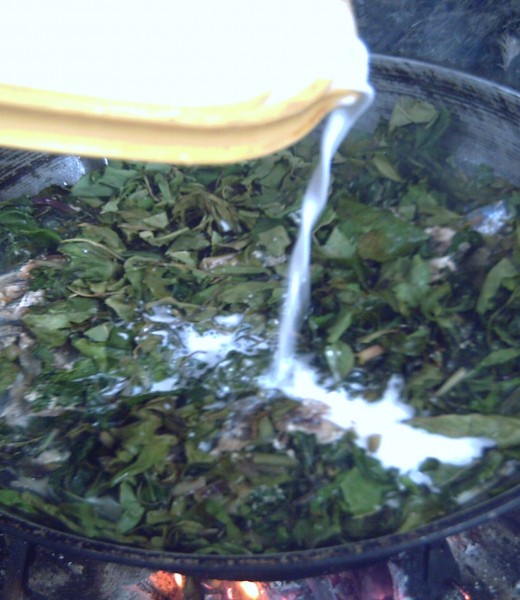
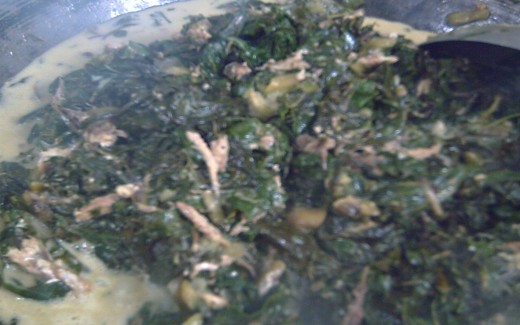
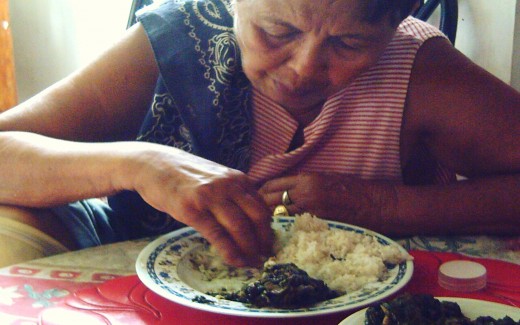
Nutritional Values
Gabi leaves - green, leafy vegetables; good source of roughage or fibers; good source of Vitamin E, Vitamin B6 (pyridoxine -cures skin diseases), potassium and manganese.
Coconut milk - whether thick (pure) or thin (mixed with water), coconut milk is a good accompaniment of Asian cuisine; a good source of potassium, saturated fats, protein and calcium. It is also a source of Vitamin C, phosphorus, sodium iron, and carbohydrates.
All About Tropical Cooking
More on Tropical Cooking
- Tropical Cooking with Travel Man: 4th Main Dish - Pa...
Ever heard of Pancit Buko or Buko Pancit? Don't worry it means the same thing. A little bit of trivia and tete-a-tete (chika-chika) while savoring its taste will lead you again to my tropical cooking... - Tropical Cooking with Travel Man: 5th Main Dish - Pa...
It's raining outside; I mean, continuously, due to the tropical storm Falcon. Then, I heard a crack sound from our backyard. And lo! My one-year old papaya just fell down due to the gusty wind, with all the... - Tropical Cooking with Travel Man: 1st Main Dish - Dr...
LAING with rice (Photo by Travel Man)I'm starting a series of cooking hub with this regional entrée in my province, Camarines Sur. As part of the Bicol region, Bicolanos are known to cook their dishes with coconut milk. Since I was young, I become... - Tropical Cooking with Travel Man: 2nd Dish - Fish in...
LANGKOY (All photos taken by; Travel Man -24March2011-except the dried fish) Many varieties of edible fishes abound in the Philippine waters. I can boast about it because of everyday, small businessmen are... - Tropical Cooking with Travel Man: 6th Main Dish - Pi...
Boiled coconut patties can compete with the usual beef patties used as burgers or filling for bunny breads. Bicolanos (the term for Filipinos in Bicol region where I live) are popular with Pinangat or Coconut... - Tropical Cooking with Travel Man: Appetizer/Side Dis...
Making a hibiscus salad is new to me. I already knew the French dressing but I doubt I can endure the taste of it, although it looks enticing. I overheard from our Jamaican stevedores when were at Kingston... - Tropical Cooking with Travel Man: Appetizer/Side Dis...
Pickling had been used as an earliest way of food preservation for vegetables. The mixture is usually composed of excess vegetables submerged in brine solution. This will be used later as side-dish or... - Tropical Cooking with Travel Man: 3rd Main Dish - Ch...
Our native hen was not fit to lay eggs and to stop her from laying eggs elsewhere, we decided to make a chicken stew or tinola in our Filipino language, due to the insistent demand of my niece and my mother. I waited for that hen to rest on the... - Tropical Cooking with Travel Man - 1st Beverage: Hom...
Every heard of cocoa drink? I will give you some pointers on how to make it at home with the ingredients available. Thanks to the Mayans, (circa 15th century) of South America who popularized this tonic drink or beverage that is considered as... - Tropical Cooking with Travel Man: 1st Dessert - Heal...
Eating fresh fruits can bring important benefits in our body. It gives us the proper nutrients we needed and cleanse our body from toxic materials. Most fruits are eaten raw, so, we must choose those...


